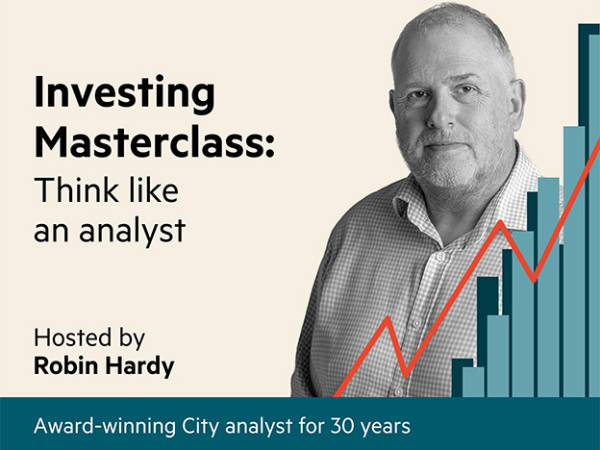How much can studying evolution tell you about markets? What can brain development teach you about how new technology sectors develop? For decades, some have claimed a multidisciplinary approach to investment is the key to superior returns, greater risk management and a happier, more fulfilling life. But what can we really learn from areas as disparate as evolutionary biology, psychology and statistics? To find out, our latest IC Book Club turns to a wider-ranging view of the world of investing.
The books we read
Poor Charlie’s Almanack, Charles T. Munger, Peter D. Kaufman (Third edition, 2008)
More Than you Know, Michael J. Mauboussin (2007)
Investing: The Last Liberal Art, Robert G. Hagstrom (2013)
Charlie Munger is Warren Buffett’s right-hand man, and one half of what is arguably the most successful investment partnership of all time. Like Buffett, Munger is famous for a brand of folksy charm and no-nonsense common sense that seems almost too simple to have helped forge Berkshire Hathaway, one of the largest employers in North America. Poor Charlie’s Almanack, styled as a homage to a grab-bag collection of wisdom by Munger’s great hero Benjamin Franklin, is a collection of speeches and writing that espouses a multidisciplinary approach to investing and life. Commonly hailed as one of the best business books of all time, hardback copies frequently sell for prices well in excess of £100 in the UK.
Robert Hagstrom and Michael Mauboussin, investment strategists at Legg Mason and Credit Suisse, respectively, have both penned shorter (and cheaper) introductions to some of the key concepts behind multidisciplinary investment. Both works benefit from the latest research and thinking on areas ranging from behavioural finance to prediction markets.
First, know thyself
What unites all three authors is the observation that it is important to have a solid foundation before delving into new areas. Attitude comes before aptitude. Mr Mauboussin opens More Than You Know by outlining the importance of patience, curiosity and a willingness to learn and challenge one’s own beliefs. As he puts it: “A proper temperament will beat a high IQ all day.” This is often easier said than done, especially when money is at stake, so investors must put a high premium on process. Mr Munger takes this further by suggesting investors should learn from the example of pilots in adopting a rigorously formalised approach, such as using a checklist to ensure they are not missing anything or fooling themselves. This checklist should evolve over time, but simply being forced to remember the basics should not be underestimated. “It is better to remember the obvious than to grasp the esoteric,” he states.
All this is to say that investors looking for long-term success will find it more useful to focus on avoiding pitfalls than attempting to unearth the next big thing. It is best to avoid entirely investments that you cannot fully understand; Mr Munger says Berkshire Hathaway sorts potential opportunities into three boxes – ‘in’, ‘out’ and ‘too tough’. Such an approach forces investors to remain in their “circle of competence”, the area where they are able to fully understand and assess the opportunities on offer, and where they have an edge over others.
It is here that Mr Munger slips from investment advice into more general life guidance on ethics and the homespun wisdom for which he is known. “There should be a huge area between everything you should do and everything you can do without getting into legal trouble,” he opines. This involves the requirement to invest for the long term, even if the time horizon is longer than one’s own life. “The only life worth living is dedicated in substantial part to good outcomes one cannot possibly survive to see,” he argues, paraphrasing Cicero.
While this is a noble sentiment, it is short on detail. Helpfully, Mr Mauboussin writes insightfully about the ways short-term, tactical decision-making should inform long-term strategy. In a complex system such as the stock market there are too many variables to calculate. Executives and investors therefore need to walk a fine line between working consistently towards a specific, long-term goal, and maintaining the flexibility to adapt to ever-changing, unpredictable circumstances. One way to do this is to set rules. Drawing on research from Professors Donald Sull and Kathleen Eisenhardt, Mr Mauboussin outlines five types of rules on how a process should be carried out, which opportunities should be pursued, prioritised or discarded, and when to walk away.
Having a clear strategy can also safeguard against cognitive biases and the ways investors can be fooled. “The study of the psychology of misjudgment is every bit as valuable as the thoughtful analysis of a balance sheet. Possibly more so,” suggests Mr Hagstrom.
While much of the study of psychology is touted as a means of helping individuals make decisions more rationally, it has wider implications in mass psychology through the tendency of people to ‘herd’, or to follow a course of action simply because it is popular. Mr Mauboussin notes in a chapter about high-performing active fund managers in the United States that only a small fraction of them are based in financial centres such as New York. More often, the high performers operate away from their peers in places such as Memphis, Baltimore or – in the case of Messrs Munger and Buffett – Omaha, where they may be less susceptible to geographical group-think.
Dealing with complexity, outside the box
The central idea of a multidisciplinary approach to investing is that if a person understands how to view the world using different models, they are better equipped to understand and identify opportunities. All this is to prevent what Mr Munger refers to as “man-with-a-hammer-tendency”, referring to the proverb “to the man with a hammer, every problem looks like a nail”. Different models are better suited to different situations. For example, Mr Hagstrom suggests viewing markets as a complex adaptive system in which perfect harmony is impossible – “a network of many individuals all acting in parallel and interacting with one another” – is preferable to the physics-based model of equilibrium suggested by economist Alfred Marshall.
Viewed in such a way, evolutionary biology might provide a better framework for the ways different organisms (companies or products) compete for food (money) and ultimately settle into a niche or perish.
Mr Mauboussin is also interested in the way diverse models relate to business processes, for example how neural development can be used to understand the dynamics of innovation. Children’s brains have many more connections between neurons than adult brains, making them more flexible, connected and active. However, they also lose these connections at a dramatically higher pace. It is this overproduction followed by ruthlessly pruning the inefficient that allows them to learn so quickly. For a business corollary to this process, one can think of the mania created by a new technology (such as the internet in the dot-com bubble or bitcoin in the 2017 cryptocurrency explosion) from which few companies or investors may ultimately benefit.
The pitfalls of innovation
Any follower of Warren Buffett will know his investment approach places a high premium on companies whose characteristics preclude other companies from competing on even terms. The ideal investment is one that has a ‘deep moat’ and works continually to make it deeper still, allowing returns to compound over time. While many know Messrs Buffett and Munger primarily as value investors, the concept of defensibility is given far more importance. Poor Charlie’s Almanack outlines Mr Munger’s three great lessons of investing as “a great business at a fair price is superior to a fair business at a great price”, repeated three times.
The challenge then, is avoiding the potential for disruptive innovation that renders an entire business obsolete. Throughout history, the control and processing of physical resources has been the main source of wealth creation, but it is ideas – in the form of new technologies or intellectual property – that are becoming ever more dominant. As this happens, a competitive advantage is harder to sustain. Mr Mauboussin relates this once again to evolutionary theory and identifies three types of competitive landscape, along with prescriptions for how companies tend to survive.
In relatively stable environments such as the utilities, commodities or real estate investment trust sectors, companies tend to generate excess returns only at the expense of their rivals or due to cyclical forces. Improvements tend to be incremental. As the landscape becomes rougher, the landscape is more changeable but not totally unpredictable and companies must combine incremental improvements with targeted innovation, as is seen with retail or financial services companies. In the most rapidly changing sectors and environments, companies are forced to innovate even where it is outside their immediate area of comfort. Think of Google’s (US:GOOG) “moonshot” division, which works on technologies such as self-driving cars, well outside of its core advertising business.
It’s not how often you win, it’s how big
One of the most important mental models, all three authors agree, is probability theory. A sound understanding of probabilities and expected values is crucial to good long-term performance. As Mr Mauboussin notes, an investor’s theories should be judged not by the frequency of their accuracy, but by the size of the payoff when they are correct. This is an approach commonly seen with venture capital funds, which make a high number of small investments expecting many or most of them to fail outright, and for a few to succeed on such a massive scale that they cover the overall outlay many times over.
Mr Mauboussin’s evaluation of successful US fund managers also bears this out, noting that long-term outperformers tend to have a higher portfolio concentration than the index – 35 per cent of assets in their top 10 holdings versus 20 per cent for the index – and much lower portfolio turnover – 35 per cent against 89 per cent for all equity funds. Cultivating a multidisciplinary approach allows investors to recognise big opportunities, but patience is required in the meantime. As Mr Munger says “all that is required is a willingness to bet heavily when the odds are extremely favourable, using resources available as a result of prudence and patience in the past”.
All three books demonstrate the sheer amount of work needed to maintain an edge as an investor. While taking a multidisciplinary approach can improve your ability to understand complex systems and recognise opportunities before others, these abilities are earned through a lifelong commitment to learning across a broad range of subjects. As Mr Munger says: “Slug it out one inch at a time, day by day. At the end of the day – if you live long enough – most people get what they deserve.”










